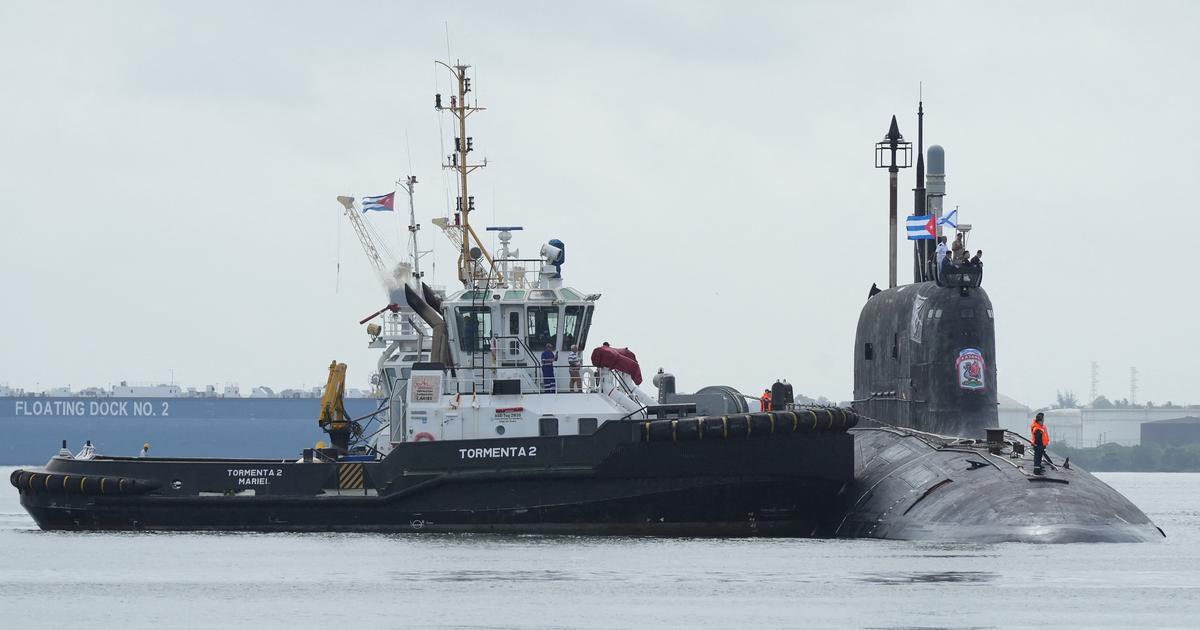Russian Naval Fleet's Historic Visit to Cuba Amid Global Tensions
Four Russian naval vessels, including the nuclear-powered submarine Kazan and the modern frigate Admiral Gorshkov, entered Havana Bay on Wednesday. This visit holds significant geopolitical implications amidst escalating tensions between the United States and Russia. The vessels, set to stay until June 17, include the fleet oil tanker Pashin and the rescue tugboat Nikolai Chiker. Notably, the Kazan submarine made a discreet entrance, showcasing only part of its kiosk with a visible Cuban flag.
According to Cuba’s Ministry of the Revolutionary Armed Forces (Minfar), none of the vessels carry nuclear weapons, alleviating regional security concerns. Minfar emphasized that the visit adheres to international regulations and represents the long-standing friendship between Havana and Moscow. The U.S. Department of Defense, meanwhile, has been closely monitoring the flotilla's movements but does not perceive it as an immediate threat.
Military Exercises and Diplomatic Overtones
Prior to docking in Havana, the Russian fleet conducted high-precision missile exercises in the Atlantic Ocean. The exercises included a simulated missile attack on enemy ships located over 600 kilometers away. The Admiral Gorshkov is equipped with the advanced Zircon hypersonic missiles, a weapon capable of flying nine times faster than sound and striking targets over 1,000 kilometers away. This exercise is part of Russia's broader strategy to project power amid conflicts with the West over Ukraine.
This naval visit coincides with a meeting between Russian Foreign Minister Sergei Lavrov and his Cuban counterpart Bruno Rodriguez in Moscow. Rodriguez voiced Cuba’s opposition to NATO’s expansion towards Russia’s borders, stating that such movements have contributed to the current European conflict, particularly between Moscow and Kyiv. The Cuban leader also advocated for a diplomatic and constructive solution to the crisis.
Political relations between Russia and Cuba have intensified, particularly following Cuban President Miguel Diaz-Canel's visit to Moscow in May, where he expressed support for Russia amid the Ukraine conflict. This recent naval visit marks the continuation of a historic bond between the two nations, a relationship that has seen renewed vigor in the face of common adversities like U.S. sanctions and geopolitical isolation.
As Russia and Cuba bolster their ties through such high-profile military and diplomatic engagements, the arrival of this fleet in Havana serves as a testament to their enduring friendship and strategic alignment.
- Cubans are set to experience a taste of Russian maritime prowess as they will be allowed to tour the Russian frigate 'Admiral Gorshkov.' This initiative, scheduled from Thursday, offers the public a rare glimpse into one of Russia’s most sophisticated naval vessels. Gorshkov is renowned for its long-range abilities, anti-submarine warfare, and an array of missile systems. The vessel will be open for public tours for four hours each day over three days.
- The ceremonial arrival saw the Russians displaying a 21-gun salute, reciprocated with cannon fire from an 18th-century colonial fort in Havana. This elaborate welcome underscores the significance of this visit, marking it as more than a mere port call but a reaffirmation of the strong, strategic ties between Russia and Cuba.
- The arrival of the Russian naval fleet has not only captivated the interest of the locals but also caught the attention of the international community, especially given the ongoing tensions surrounding the Ukraine conflict and the consequent Western sanctions on Russia. The visit serves as a demonstration of Russian naval capabilities close to U.S. shores, bringing historical undercurrents of the Cold War era to the forefront.






